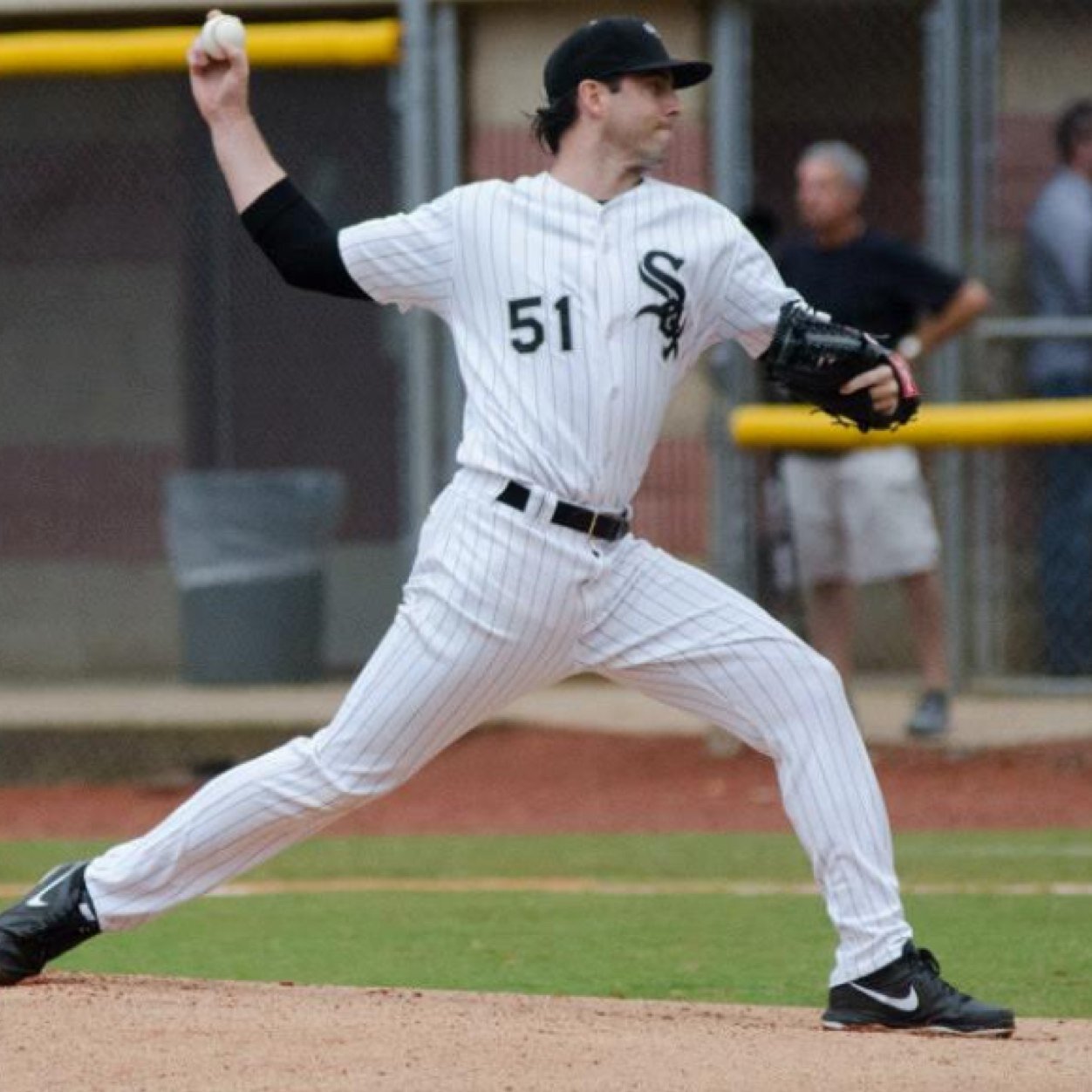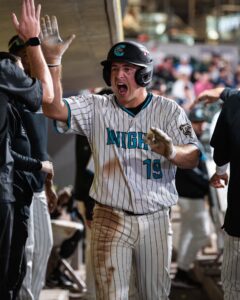Prospect Perspective: Pitcher Scott Carroll on the Tommy John Process
***The following article was written by Scott Carroll, a Chicago White Sox pitching prospect, as a guest of FutureSox. This is our second in a series of articles written by the players themselves. In this one, Scott tells us what it’s like for a pitcher to go through a major surgery and recovery while trying to break into the majors. Oh, and, Dusty Baker makes an appearance. We hope this gives our readers a unique view into a player’s perspective on life in the minors.
By Scott Carroll

My first spring training, I wanted to make a good impression. During a Triple-A game I spotted Dusty Baker, the Reds Manager at the time, leaning up against the backstop fence. I thought, man this is a great opportunity to go introduce myself. I walked over to Dusty and said, “Hey Skip I’m Scott Carroll.”
Dusty replied, with toothpick in mouth, “Oh big Scott Carroll! I’ve heard a lot about you!”
Now in my head I’m excited. The major league manager is telling me that he has he heard a lot about me. That’s a great sign.
“You out of high school, right?” Dusty asked.
“No, I went to college.” I replied.
Dusty came right back, “Outfielder, right?”
“No no, Dusty. I… I’m a pitcher.”
“OK, OK that’s right. Well, big Scott Carroll…good luck to you.”
Like Dusty Baker, a lot of you probably don’t know who I am. My name is Scott Carroll. I’m a right handed pitcher in the Chicago White Sox organization and I wanted to give you an inside look at my Tommy John rehabilitation process.
Injuries suck. There’s no doubt about it. And injuries that keep athletes off the field or court for numerous months at a time, definitely suck. Never did I picture myself becoming another statistic that would go under the knife to have my UCL repaired. I worked out a lot, took care of my body, had a consistent shoulder program, and had a relatively low amount of innings under my belt. But unfortunately in October of 2012, I tore my ulnar collateral ligament while pitching in a game in the Venezuelan Winter League. The night it happened I didn’t really know what to think. I had pulled myself out of the game in the 4th inning, told the coaches and trainers that my elbow had balled up and it was very uncomfortable. I hadn’t felt it pop on any specific pitch. But I noticed something was wrong when I could no longer throw the ball to home plate. The trainers examined my elbow and performed manual tests, but there was no confirmation that I had indeed torn my ligament. So that left me with hope, thinking that it was just a strain of some sort in my elbow.
While waiting for three days to get my MRI, I kept telling myself that I didn’t tear my UCL. But like all truths, mine eventually came out. After finding out that I would need Tommy John surgery I had a wave of emotions and thoughts come over me. I felt sorry for myself, had a little pity party, and thought about my future. As athletes we struggle with our identity when our talents leave us or injuries take the game away from us. Without baseball, who was I was going to be? That is a question that circulated in my mind after finding out that I would need surgery. But then ultimately I realized that I could either whine and continue to feel sorry myself, or take this experience and use this surgery process to make me a better person, pitcher and teammate.
“I have an opportunity now to be a better teammate and watch other stories unravel and be more of a student of the game. By no stretch of the imagination is my journey over here. This is just a mild bump in my road. Nothing’s been really easy when I’ve pitched. This is an opportunity for me to get a better arm. Why is that disappointing?” These were words from Brian Wilson, and they spoke to me more than God himself. I adopted this mentality and used it to fuel my rehab. I am very thankful to have had people face this adversity before me, to help guide me down a path of my own.
I was fortunate enough to have the legendary Dr. James Andrews perform my surgery. As soon I found out that my elbow required reconstruction, there was no doubt in my mind that he was the surgeon I wanted. He is the Michael Jordan of performing this surgery. He and his staff at their facility in Pensacola, FL are first class. I couldn’t have asked for a smoother surgery process. To perform my surgery, Dr. Andrews removed my gracilis tendon from my left hamstring and used that to take the place of my torn UCL. After surgery, I awoke to my parents and Dr. Andrews by my bed. He assured me that the surgery went great, to which I replied with a smile and thank you while still hopped up on pain pills. I am very thankful for Dr. James Andrews.
The Tommy John rehabilitation process takes patience. There is no way around it. And I learned very quickly that I needed to accept that. There were many days that were painful and downright frustrating. Every day for the first three months was a monotonous schedule of exercises and stretches. But quite honestly, I looked forward to the repetitive physical therapy sessions each day, because I took each new day as an opportunity to make myself better. See to me, there are times in our lives when priorities need to be assessed. What is important to you? What are you willing to give up? For me, working my butt off to get my elbow as healthy as I could so that I could fulfill my dream of pitching in the Major Leagues was priority number one. But by no means could I have done it by myself. And for that I am thankful for my family, friends, girlfriend, and physical therapists who showed support and helped me reach my rehabilitation goals.
Fast forward five months (July 2013). With hard work and completely dedicating myself to my rehab, and the help of those others, I was able to pitch in games at eight months post-surgery. This was not something that I had envisioned when beginning my rehab protocol. But with each and every day my arm became stronger, more flexible and able to withstand the stress of long tossing and throwing off the mound. Even though each individual case of Tommy John rehab is different, there are still so many things to learn from other people who have gone through it. I was constantly asking teammates and former teammates questions about their experience. I wanted to engulf myself in the entire process and try to learn as much as I could.
Another positive of returning back to the mound earlier than expected, was that I was able to rehab with the AA team at the end of the season and be a part of the 2013 Southern League Champion Birmingham Barons. What an experience that was! From the big plays, to fantastic pitching, to berserk bottle popping celebrations. This was something I was never going to forget. It was almost like a piece of silver lining that was a reward for all the work and effort I put in to getting my elbow healthy again. I am thankful for my teammates and coaches.
Now that spring training is upon us, I am 15 months removed from surgery and I couldn’t be more excited about this upcoming season. I was thrilled to have re-signed with the White Sox and I am looking forward to competing with a brand new healthy elbow.
Looking back and reflecting on my past year; I grew the most as a person and baseball player, facing this type of adversity. I knew the rehab and the process wasn’t going to be easy. But when I made my decision to go through with surgery and rehabilitate my elbow, I fully committed to doing everything I could to give myself a chance to pitch at the highest level. Because in the end, we all just want a chance. And for that I am thankful for this experience.



